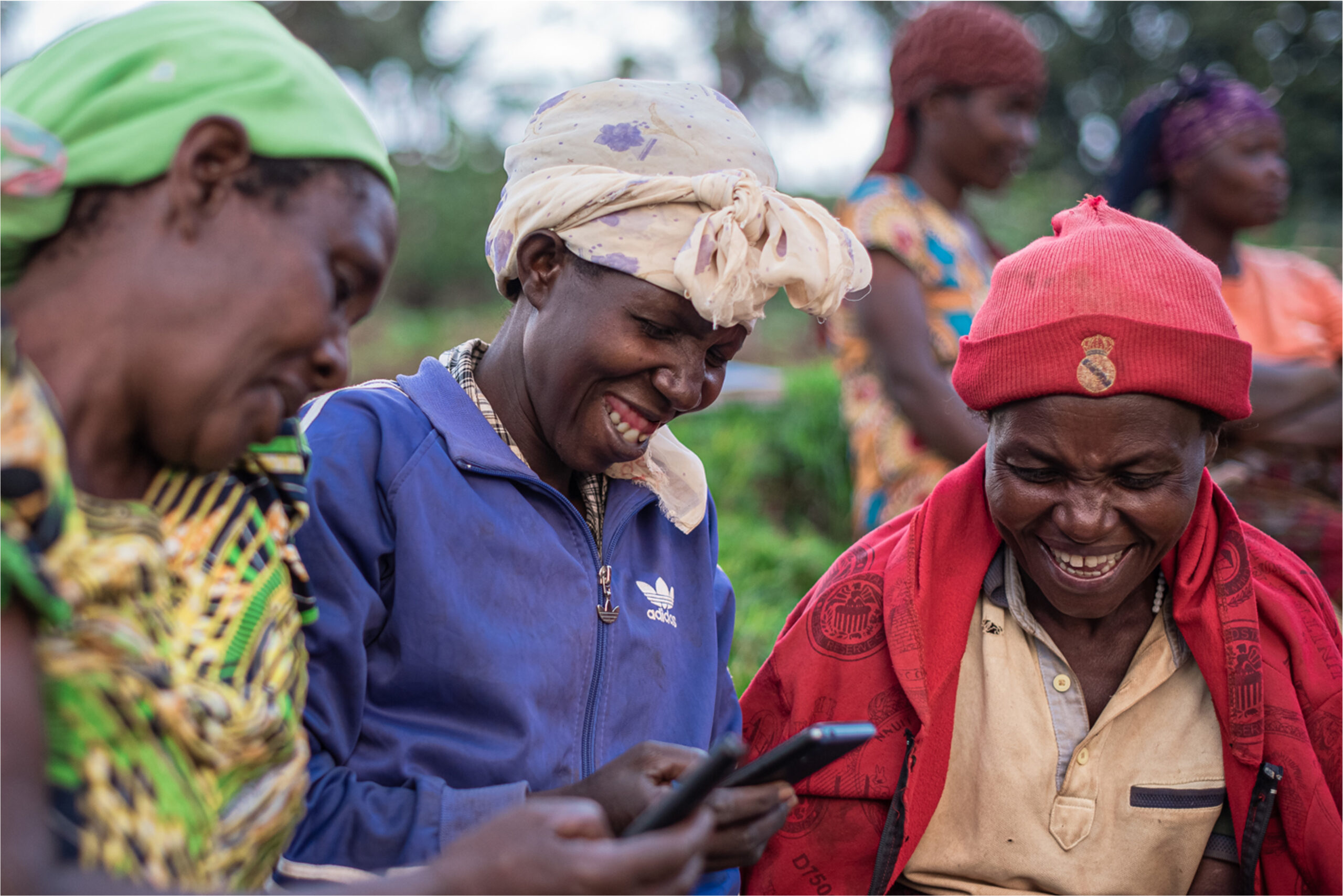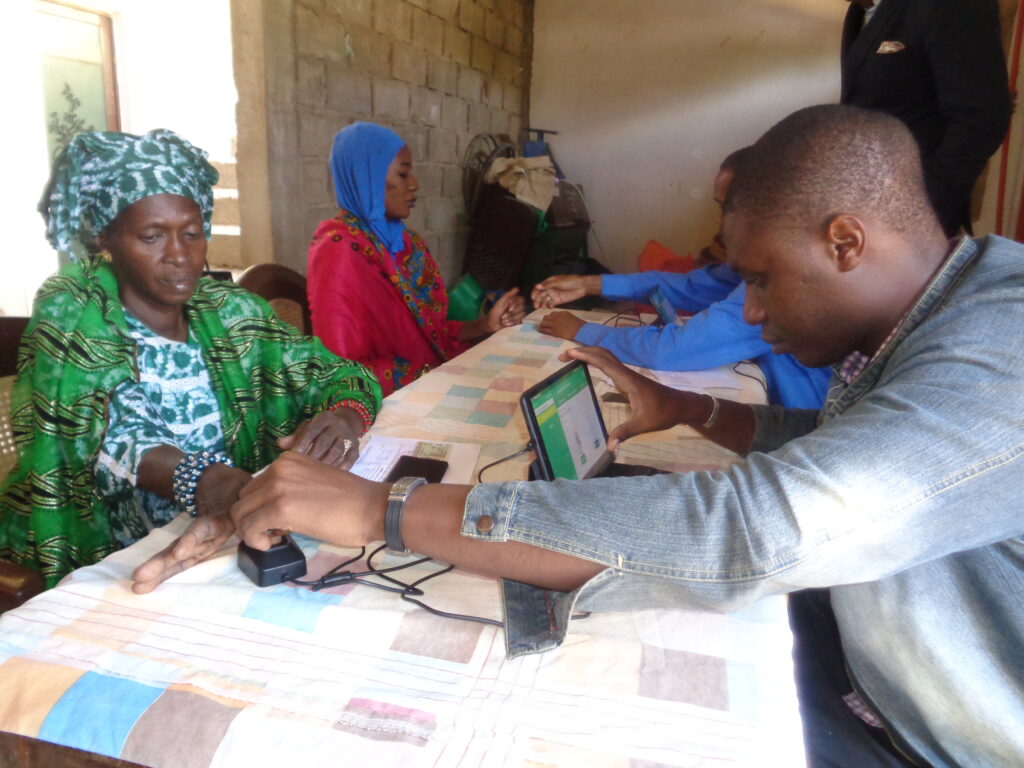Key Takeaways
- While digitization of savings groups facilitates access to formal financial services, loans from external lenders can be risky for many savings group members.
- A digital solution provider can join a savings group as a member to increase savings, the value of internal loans, and the number of loan transactions, and to decrease the risks of defaulting on loans from external financial institutions.
- An AI-driven “Avatar” service in DSG apps can bring the Micro Equity solution to scale across thousands of savings groups.
Take Action
- Consider the risks of linking digital savings groups to formal financial services.
- Contemplate investment products internal to savings groups that increase savings and lending.
- Use digital technology to bring innovative and more equitable solutions for savings groups to scale.
Many development interventions work on the assumption that people in developing countries are in control of their lives and only need better information, technology, tools, infrastructure or access to finance to improve their lives further.
But what if this assumption is wrong? What if the defining feature of many emerging markets is precisely the fact that individuals have far less control over outcomes than those of us who live in more established economies? And how might we re-think our interventions if we were to design services with this in mind?
At DreamStart Labs Inc., we faced a challenge recently that led us to ask these questions and think differently about how to provide services for low-income people in emerging markets that both meets their needs and protects them from risks beyond their control.
The challenge: limited funds available in savings groups
DreamStart Labs Inc. is a fintech that provides digital solutions for Savings Groups, which are informal community banks whose members come together to save and lend money to each other. While Savings Groups are extremely successful, one key limitation is that funds available for lending are self-generated and therefore limited.
Furthermore, because community banks distribute their savings and interest to members at a set date, the total is reset to zero at the end of each Savings Cycle. A group begins each new Savings Cycle with no funds to lend so members must either wait until sufficient funds have accumulated or go elsewhere. Neither is optimal and both take time.
External loans provide a solution, but can put more risk on clients
One solution is to link Savings Groups to external lenders. As Savings Groups use our DreamSave digital ledger app, for example, they build data-driven credit scores that give them unprecedented leverage with formal financial institutions. For the first time, unbanked members can access external loans at fair rates – even if they live in a rural village miles from the nearest bank.
But while external loans can be a great solution for many members, there is still an important gap. In many cases, members have very little buffer in case they cannot repay an external loan. This is especially true in agricultural economies where income cycles may not match traditional loan repayment terms. For these members, external loans bring added risk.
The question is: who bears the risk?
To provide the right solution to this problem, we needed to build on two key facts:
- Clients in developing markets are highly exposed to external risks.
- The capacity of clients to absorb risk falls the further you go down the income scale, putting the poorest at greatest risk.
With this in mind, offering only traditional loans neither felt right nor fair. For already vulnerable members, this would effectively be asking them to absorb all the risk of loan repayment.
We realized that we needed to introduce a new type of product that recognized risk and, specifically, changed how risk is distributed. We needed to move beyond a complete transfer of risk to the group and to put ourselves at risk, such that our incentive for success – and risk of failure – would be aligned with every other member.
Our solution: “Micro Equity”
Our solution was to design a new risk-sharing “Micro Equity” investment product to deal with the lack of funds in the early part of the savings cycle. The solution works in the following way. In an agreement with the members, DreamStart Labs joins as an ordinary member and contributes a lump sum upfront and/or invests regularly in the Savings Group like any other member.
By contributing as a member, we increase the funds available so Groups can lend earlier, in higher amounts or to more members. We also share the risk of losing all or part of our savings should the group fail. On the other hand, if the group completes the cycle and shares out earnings, we realize our portion of the profits. In short, if the group wins, we win. If it loses, we lose.
This product works best in digital savings groups. Without digitization, Micro Equity could only be delivered through human agents which would be costly, intensive, prone to error and difficult to scale.
The results: testing micro equity in Rwanda
To test this idea, we conducted a pilot of a Micro Equity product in Rwanda with 16 groups who currently use our app. After concluding the full 12-month savings cycle, we found that, compared to the previous cycle:
- The Micro Equity pilot groups increased savings by 65 percent on average.
- The value of internal loans increased by an average of 110 percent.
- The number of loan transactions increased by 28 percent on average.
We also surveyed the pilot groups as soon as the pilot was complete to ask about their experience with the Micro Equity product. The survey revealed that:
- All groups really liked the product.
- Every group repaid the Micro Equity investment at the time of share-out as agreed.
- The groups wanted us to continue with the product.
The most striking finding from the survey was the overwhelming preference of all the groups for Micro Equity versus an external loan. The reasons the groups preferred the Micro Equity option were flexibility and trust.
In terms of flexibility, the members appreciated the fact that Micro Equity allowed extra time to use the investment (i.e. until the end of the 12-month Savings Cycle) as compared to an external loan and that it reduced the stress of meeting the series of fixed repayment dates required by external lenders.
The second reason to prefer Micro Equity was, as one member said, “We trust you more.” Members know DreamSave, while banks and microfinance institutions are, for most members, distant and relatively unknown. So it makes sense that members are more comfortable dealing with us. When that trust was backed up by the creation and delivery of a service that groups loved, it proved to be a winning combination.
Taking it to scale: AI-driven in-app Avatar
The participating groups in Rwanda are enthusiastic about continuing with Micro Equity into their next savings cycle. We have also decided to extend the pilot to see if Micro Equity has the same appeal in other countries in Africa as well as, for the first time, a country in Asia.
If this extension proves successful, our plan is to offer Micro Equity investment to groups worldwide. To ensure scalability, we plan to automate the service through an in-app “Avatar” who, with the group’s consent, will join the group as would a physical member. An AI-driven “Avatar” service delivered as an automated feature means we can deliver investment at scale across DreamStart Labs Inc.’s thousands of groups across the world.
Conclusion: can risk-sharing be applied more widely?
Shared goals involve shared risks, and there are factors outside of our control for which no one partner can be held responsible.
In trying to meet the investment needs of our Savings Group clients, our goal was to avoid solutions which might make clients worse off by insisting that they carry the risk of investment failure. We had to think differently to come up with a product that aligned our incentives for success with that of the group.
We believe we have found an answer to more equitable risk sharing in Micro Equity: an investment by us in the group where we share the fruits of success and the risk of failure.
Not only has this approach proved very popular with groups, but we think it can be applied more widely. Our hunch is that there are many other opportunities to rethink solutions by looking again at how risk is distributed, perhaps to the benefit of clients and development organizations alike.





